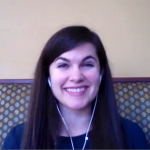Today’s guest post is by one of my good friends, Nate Riggs. Nate is the founder and CEO of NR Media Group, a Columbus, Ohio based award-winning content marketing and digital media agency. Nate is extremely smart and when he’s not blogging, speaking, leading his team and building a business, he manages to fit in teaching at Ohio University and making his blended family a priority. Enjoy today’s post and be sure to follow Nate on Twitter.
Whether you are a hardcore fan of European football (or soccer, for my American friends), or you only tune in for the World Cup every four years, it’s hard to watch this new marketing video from Adidas, featuring four well-known players, and not get caught up in highly emotional whirlwind that is international football.
[youtube http://www.youtube.com/watch?v=UNiGSf2Sy30]
At the time of this post, more than 5.3 million viewers have tuned in to watch Adidas tease the viewers with their love/hate relationship with their favorite/least favorite player.
By most measures, the YouTube statistics show that this has been a very successful video asset for the brand. Adidas’ flippant yet smartly crafted narrative of envy versus idolatry has resulted in brand awareness (views and time watched), brand affinity (subscriptions driven) and brand advocacy (shares).
But there’s more to this story than what can be found by using YouTube’s metrics.
As you watch the video, notice the Adidas logo fixed in the upper right hand corner of the screen. Go ahead and hover over the logo with your cursor. You’ll see a slider open to show you that nearly 575,000 viewers have already subscribed to the Adidas Football channel. When you click this link, you too will have the opportunity to join the pack and subscribe.
In the same frame, another annotation link leads you to Adidas Football’s responsive e-commerce website where you are greeted by a header banner and calls-to-action that encourage you to learn more about the product.
And if you’re ready to buy, you can peruse and shop football cleats, and even chat with an Adidas football “expert,” who is patiently standing by to answer any questions.
Engineering Marketing Videos
By definition, engineering involves the design, construction, and use of engines or machines that help people, organizations and societies accomplish tasks more efficiently and effectively.
If you take this definition to heart and begin to look at how you tap agencies and other video marketing services to produce your content asset, you will realize that each piece of content is, in a sense, a machine that can be engineered to captivate your audience and drive them toward actions that support your business goals.
To help you put this new mindset into action, you can follow a seven phase framework I call Video Engineering.
1. Build Your Online Platform
There are three critical elements that you will need to consider when constructing your platform:
- Mobile responsive website, blog or ecommerce store – This will serve as the ultimate destination for traffic generated by your video assets.
- Video hosting network – In most cases, this will be YouTube, but other services like Wistia or Vimeo can also work.
- Marketing automation system – This system will house your marketing database and provide features like email marketing, social media management and landing page design tools that will help you activate the desired conversion behavior.
If you are missing any of these elements, or if they are not set up and configured properly, start here.
2. Conduct Diligent Planning
During this step, both you and your marketing team must take a step back from the story and brainstorm how you would like your video program to support your overall business goals.
Applying the S.M.A.R.T acronym – Specific, Measurable, Attainable, Realistic and Timely – to your goal setting will be critical to successful planning.
3. Consider Content Perception
In this step, work with your team to envision the broader theme and individual concepts that will dictate how each of your video assets will be produced and ultimately perceived by your target audiences. Focus on answering each of the questions below:
- How does the overall creative theme tie separate video concepts together to form a larger story?
- What emotions will each video asset evoke in the minds of your target audience?
- Will these emotions be powerful enough to motivate them to click through in support of your strategic goal?
4. Invest in Pre-Production
In the Pre-Production step, you and your team will work with your video marketing services to flesh out the details for your themes and individual video concepts. Your work in this phase will also entail activities such as:
- Scouting production locations
- Determining the days of shooting needed to capture the required footage
- Identifying and securing any required interview subjects or talent
- Determining the equipment you will need to produce your video assets
- Outlining a production budget
- Organizing production resources such as videographers, sound engineers, gaffers and production directors
5. Efficiently Execute Production
This is the step when all the creative brainstorming, research and diligence applied to hammering out details comes together to help ensure that you and your team will be able to capture all the audio and video needed for the final video assets.
Chances are, you will be working with an outside video marketing service to execute your day of shooting. Make sure to share all of your planning documentation with them well in advance.
6. Master Post-Production
This step focuses on reviewing and logging all of the raw media that has been captured, selecting specific segments of footage that align with your plan, and then working to edit the raw media into a final video asset that will be ready to upload and configure.
To ensure the most efficient process, have your production resources start by cutting together the A-roll, which will typically contain the audio track and drive the story line. Once you have reviewed and are satisfied that the story aligns with your plan, move into editing in the B-roll shots that will consist of creative close-ups, motion graphics and effects that work to increase the visual appeal of the asset.
The final task in post-production is proper compression and processing of the video file so that it can be uploaded to your platform for distribution across the web.
7. Optimize Performance of Your Marketing Videos
The final phase in the video engineering process focuses on ensuring that the performance of the video matches up against the original strategic objective.
This phase includes the technical configuration of the hosted video and should include:
- Writing copy for each video that is optimized for specific keywords and phrases that can be found by search engines.
- Setting up and testing YouTube annotations that will allow your audience to convert via click-through.
- Integrating hosted videos into your website, blog or other online properties.
- Distributing your video through organic social media updates, digital advertisements, email and other online and offline marketing channels.
Work to measure each of your marketing videos as well as the overall performance of your channel.
Your Team Has the Ball
Audiences are increasingly spending time consuming video from their their mobile devices in hopes that they will find content that will not only meet their information needs, but also inspire them to to take action.
As a marketer, you will be tasked with producing marketing videos that get results.
How are you producing videos today?


